

PROGETTARE LA LUCE DESIGNING THE LIGHT
PROGETTARE LA LUCE DESIGNING THE LIGHT
Intro archi-decorativo
Analisi dati tecnici
La luce del sole
Colore e resa cromatica
Colore e temperatura della luce
Cos’è la luce, perchè la luce
Funzionalità
Valori di illuminamento raccomandati
Destinazioni d’uso
Flusso luminoso
Rendimento ottico
Illuminamento
Grandezze fotometriche
Ugr
Dimmerazione
Grado di protezione IP
Archi-decorative introduction
Technical datas analysis
Sunlight
Colour and colour rendering
Colour and temperature of light
What is light, why light?
Functionality
Recommended illuminance values
Destinations of use
Luminous flux
Optical performance
Illuminance
Photometric datas
Unified Glare Index (UGR)
Dimming
IP rating
ARCHI-DECORATIVE
ARCHI-DECORATIVO è l’appellativo che identifica corpi illuminanti decorativi dalle performance illuminotecniche importanti, con diverse modalità di utilizzo dal design contemporaneo e decorativo.
Obiettivo
Contardi, intraprendendo questo percorso, ha come obiettivo l’avere in collezione il maggior numero di prodotti funzionali e decorativi.
CONTARDI ACADEMY nasce dall’esigenza di coniugare la conoscenza specifica del prodotto archi-decorativo con la capacità di progettare uno spazio sia in ambito residenziale che pubblico, per interni o esterni.
ARCHI-DECORATIVE is the term that identifies decorative lighting fixtures with outstanding illumination, varied uses, and a contemporary and decorative design.
Objective
Contardi, has chosen this path to maximise the number of functional and decorative products in its collection.
CONTARDI ACADEMY was born from the need to combine specific knowledge of the archi-decorative style with the ability to design a space both in residential and public areas, indoors or outdoors.
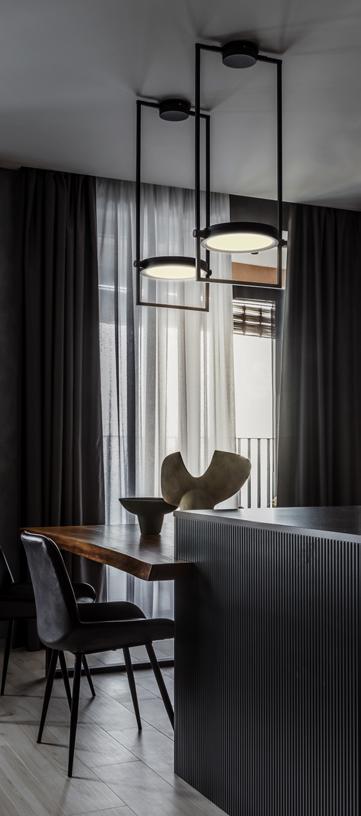

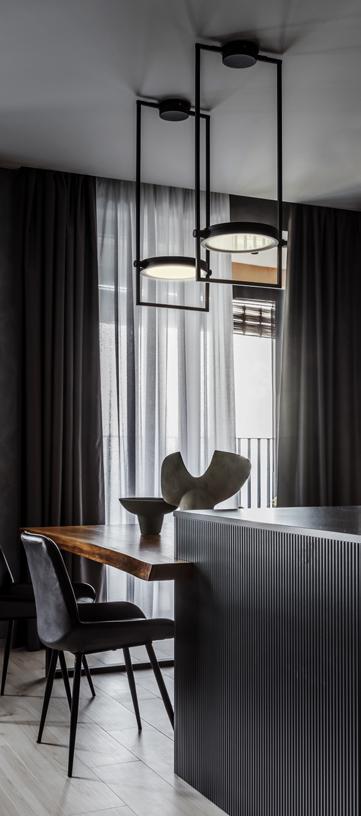
400 [15.7]
Ø160 [6.3]
250 [9.8]
935mm [36.8] / 1200mm [47.2]
918 [36.1]
270˚
40 [1.6]
45 [1.8]
Ø320 [12.6]
220 - 240V
So small
1 x 17W Custom LED; 2480 Lm
3000 K; CRI >90
Dimmerazione taglio di fase/Triac.
Compatibilità con sistemi di dimmerazione (DALI e 1-10V) disponibili su richiesta
110V
So small
1 x 17W Custom LED; 2480 Lm
3000 K; CRI >90
Dimmerazione taglio di fase/Triac.
Compatibilità con sistema di dimmerazione 1-10V disponibile su richiesta
220 - 240V
So small
1 x 17W Custom LED; 2480 Lm
3000 K; CRI >90
Phase cut dimming/Triac.
Compatibility with dimming systems (DALI and 1-10V) available on demand
110V
So small
1 x 17W Custom LED; 2480 Lm
3000 K; CRI >90
Phase cut/Triac dimming.
Compatibility with 1-10V dimming system available on demand
ANALISI DATI TECNICI
TECHNICAL DATAS ANALYSIS
GRANDEZZE FOTOMETRICHE / PHOTOMETRIC DATAS
Flusso luminoso (Lumen) Luminous flux (Lumen)
Illuminamento (Lux) Illuminance (Lux)
Potenza luminosa (Watt)
Power (Watt)
2480Lm
2480Lm x 10m2 = 248 Lux
1x17 Watt
QUALITÀ DELLA LUCE / LIGHT QUALITY
Temperatura di colore (Kelvin)
Colour temperature (Kelvin)
Resa cromatica (CRI)
3000 K
Colour rendering (CRI) >90
FUNZIONALITÀ / FUNCTIONALITY
Dimmerabilità Dimmability
Sistemi di dimmerazione Dimming control systems
Dimmerazione taglio di fase/Triac
Phase cut/Triac dimming
DALI e 1-10V
La luce naturale del sole nelle ore della giornata interagisce con gli elementi dello spazio, naturali e artificiali, creando variazioni di colori, riflessioni e ombre inattese, dando forma a magie e suggestioni.
La luce è una componente fondamentale del progetto, rivela materiali e colori, crea profondità.
Il colore è una percezione visiva che il nostro cervello codifica come sensazione quando un oggetto viene illuminato.
Il colore, in assenza di luce, non esiste.
Il colore è luce e la luce dona il colore che ci restituisce sensazioni ed emozioni. Quando si parla del colore della luce non si intende la luce colorata, ma la luce più adatta ad esaltare toni caldi o freddi, capace di celebrare o di stravolgere la natura di un ambiente o di un oggetto che si va ad illuminare.
The natural light of the sun during the hours of the day which interacts with the elements of the space, natural and artificial, creating variations of colours, reflections and unexpected shadows, shapes magic and suggestions.
Light is a fundamental component of the project, it strips, reveals materials and colours, creates depth.
Color is a visual perception that our brain encodes as a sensation when an object is illuminated.
Color, in the absence of light, does not exist.
Color is light and light gives the color that gives us sensations and emotions. When we talk about the colour of light, we do not mean coloured light, but the most suitable light to enhance warm or cold tones; this can celebrate or transform the nature of an illuminated object or environment.
Farbenkugel LA SFERA DEI COLORI
Philipp Otto Runge nel 1810 ideò una sfera tridimensionale dei colori per classificarli secondo tonalità, luminosità e saturazione.
Farbenkugel THE COLOUR SPHERE
In 1810, Philipp Otto Runge devised a three-dimensional sphere of colours, to classify them according to hue, brightness and saturation.
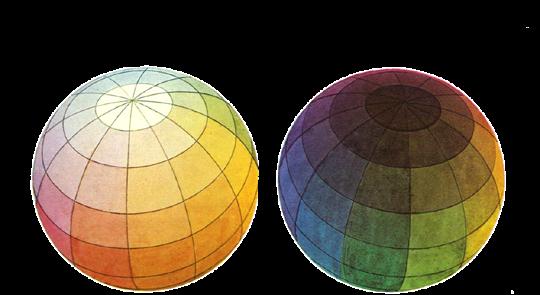
W B
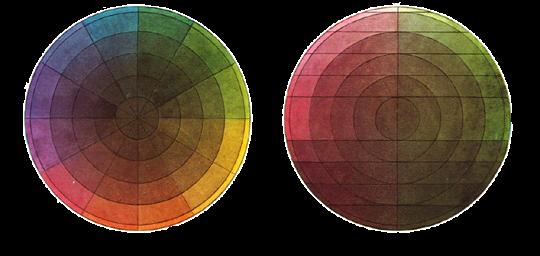
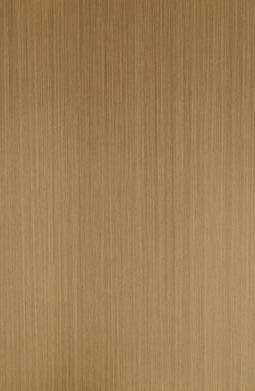
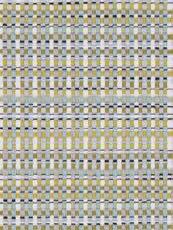

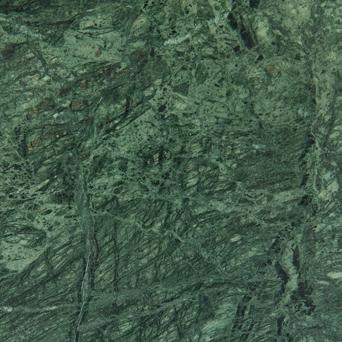
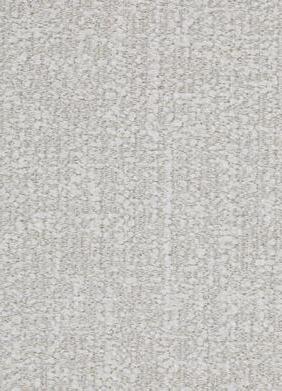
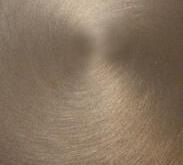
Tutti conosciamo l’importanza della studio di materiali e colori che sta alla base di un progetto di interni. A questo scopo la luce gioca un ruolo fondamentale nel rendere merito ed enfatizzarne le qualità del progetto.
We all know the importance of studying materials and colours, as these form the basis of an interior design. For this purpose, light plays a fundamental role in expressing the character and the quality of a project.
Indice di resa cromatica (IRC / CRI)
COSA SI INTENDE PER IRC O CRI?
L’indice di resa cromatica (IRC) è quel valore che descrive la capacità di una sorgente luminosa artificiale di restituire fedelmente i colori di un oggetto illuminato.
In altre parole, indica come una lampada riproduce colori rispetto alla luce naturale del Sole.
L’indice di resa cromatica può anche essere rappresentato dall’acronimo CRI, dall’inglese “colour rendering index”, e può assumere un valore fra 0 e 100, dove 100 è la luce naturale del sole. È espresso come il valore Ra di una sorgente luminosa.
Colour rendering index (CRI)
WHAT DOES CRI MEAN?
CRI is the value that shows how an artificial light source makes colours appear.
In other words, it indicates how a lamp reproduces colours compared to natural sunlight.
The colour rendering index can also be represented by the acronym IRC, from the Italian “indice di resa cromatica”; it takes a value between 0 and 100, where 100 is natural sunlight. It is expressed as the CIE Ra value of a light source.
<39 Ra Scarsa
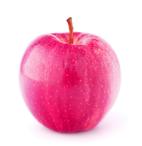



TEMPERATURA DI
(KELVIN) COLOUR TEMPERATURE (KELVIN)
COSA SI INTENDE?
Ogni colore ha la sua “temperatura”, misurata in Kelvin (K).
Questa unità di misura indica le caratteristiche cromatiche della luce, la tonalità di una specifica sorgente luminosa.
A bassi valori di Kelvin corrispondono tonalità calde (warm), ad alti valori corrispondono tonalità fredde (cool).
La luce solare diretta corrisoponde a circa 5300K, mentre la luce diurna, il cui colore riflette anche l’azzurro del cielo, è di circa 6000K o superiore.
Ma cos’ha a che fare la temperatura in gradi Kelvin con il colore della luce?
La risposta è più semplice di quanto si possa immaginare.
La relazione sopracitata si basa sul colore della luce emessa da una fonte metallica incandescente.
Quando un pezzo di metallo (definito “corpo nero”) viene riscaldato, cambia colore passando dal rosso all’arancio e dal giallo al bianco, fino ad arrivare a una tonalità bluastra.
Il colore della luce emessa da un oggetto incandescente dipende unicamente dalla temperatura.
WHAT DOES IT MEAN?
Each colour has its own “temperature”, measured in kelvins (K).
This unit of measurement indicates the chromatic characteristics of light, meaning the tone of a specific light source.
Low kelvin values correspond to warm tones (warm), high values refer to cold tones (cool).
Direct sunlight is about 5,300 K, while daylight, whose colour also reflects the blue of the sky, is about 6,000 K or higher.
A standard incandescent lamp has a temperature of 2,700 K.
But what does the temperature in kelvins have to do with the colour of the light?
The answer is simpler than you might imagine.
The above relationship is based on the colour of the light emitted by an incandescent metal source.
When a piece of metal (called a “black body”) is heated, it changes colour from red to orange and from yellow to white, before eventually becoming a bluish hue. The colour of the light emitted by an incandescent object depends solely on the temperature.
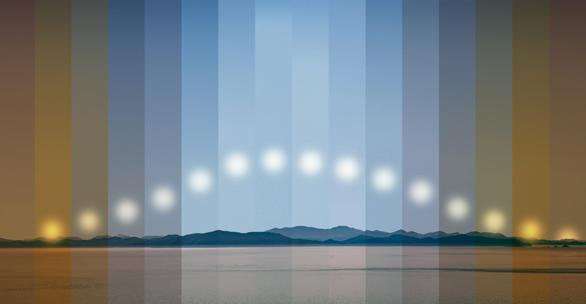
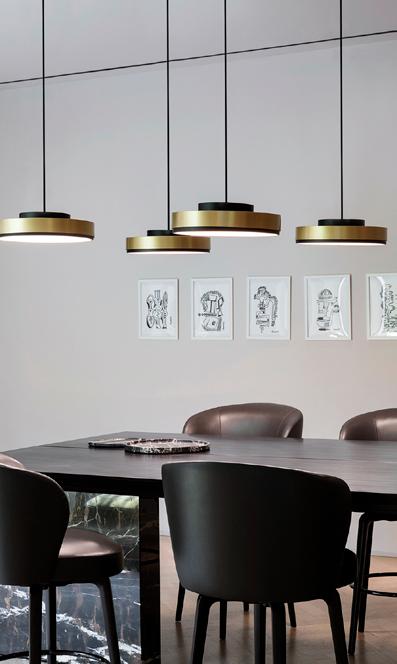
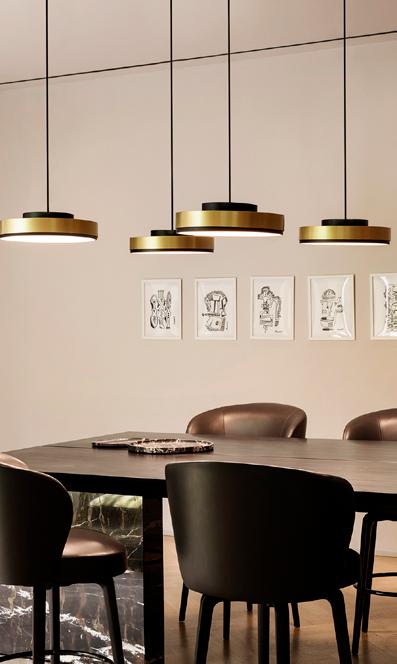
A seconda della temperatura delle lampadine utilizzate, ci troveremo di fronte a scenari diversi:
BIANCO CALDO: 1000 < K < 3300
Viene utilizzato preferebilmente negli ambienti domestici, hospitality e zone relax, creando una sensazione di calore e comfort.
BIANCO FREDDO: K > 5300
Adatto per grandi spazi aperti al pubblico, come supermercati e ospedali, dove ciò che conta di più sono i dettagli e l’efficienza.
BIANCO NEUTRO: 3300 < K < 5300 È l’ideale per uffici e luoghi di lavoro, crea il massimo contrasto tra i colori.
According to the temperature of the bulbs used, we will be faced with different scenarios:
WARM WHITE: 1000 < K < 3300
This is preferably used in domestic environments, hospitality and relaxation areas, creating a feeling of warmth and comfort.
COLD WHITE: K > 5300
Suitable for large spaces open to the public, such as supermarkets and hospitals, where details and efficiency matter the most.
NEUTRAL WHITE: 3300 < K < 5300
Ideal for offices and workplaces, it creates maximum contrast between colours.
La luce non è ovunque, la luce si manifesta e si cela in uno spazio, dipende dal corpo o dai corpi illuminanti utilizzati. Diretta, indiretta o diffusa.
Parete, a soffitto, piantana o sospesa.
La luce in un punto cattura l’attenzione, ci svela un angolo, illumina il tavolo o racconta un quadro.
Ci indica un percorso o un punto di arrivo.
Il rapporto fra luce e ombra ci aiuta a creare un ambiente, uno scenario, esaltare un particolare architettonico o dare volume allo spazio.
Light is not everywhere; light manifests itself and is hidden in a space – it depends on the setting or lighting fixtures used.
Direct, indirect or diffused.
Wall, to ceiling, on the floor, or suspended.
The light in one point captures our attention, reveals a corner, illuminates a table or tells a story of a painting.
It indicates a route or point of arrival.
The relationship between light and shadow helps us to create an environment, a scenario, to enhance an architectural detail or give volume to the space.
FUNZIONALITÀ
Per progettare un impianto di illuminazione efficiente, ma anche pratico e accogliente, bisogna tener conto di alcuni fattori:
- dimensione degli spazi
- destinazione d’uso
- quantità di luce necessaria
- scenografia / atmosfera che si vuole creare
La destinazione d’uso è certamente uno dei fattori fondamentali in quanto determina la scelta delle fonti luminose a seconda dell’intensità di luce necessaria per garantire la funzionalità dell’ambiente.
A seconda dell’utilizzo, è importante capire come garantire un equilibrato livello di illuminamento dello sapzio.
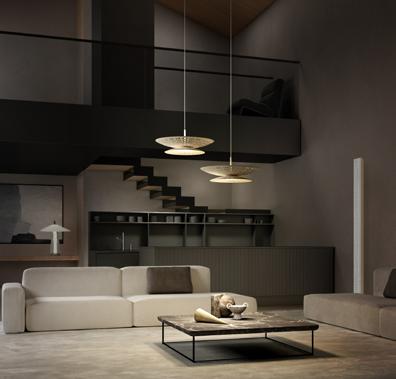
FUNCTIONALITY
In order to design an efficient, but also practical and welcoming lighting system, various factors must be taken into account:
- size of the space
- intended use
- amount of light needed
- dramatic effect and atmosphere to be created
The intended use is certainly one of the fundamental factors, as it determines the choice of light sources according to the intensity of light needed to guarantee the environment’s functionality.
Depending on the use, it is important to understand how to ensure a balanced level of illumination in the room.
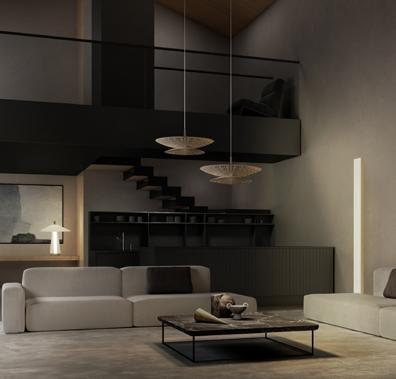
VALORI DI ILLUMINAMENTO RACCOMANDATI
RESIDENZIALE / HOTEL
Cucina, studio, luogo di lavoro 350/400 lux
Soggiorno 150/200 lux
Camera da letto 100/150 lux
Bagno (generale) 150 lux
Bagno (specchio) 350 lux
Scale, corridoio, disimpegno, ripostiglio, garage 100/200 lux
RISTORANTE
300 lux
Corridoio 200 lux
Cucina
RECOMMENDED LIGHTING LEVELS
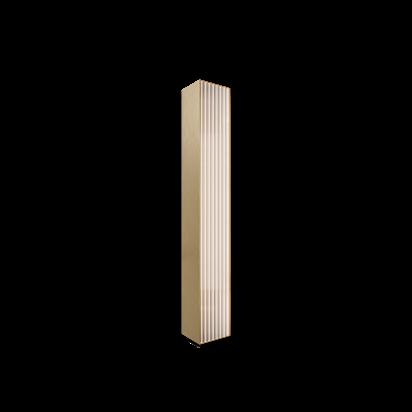
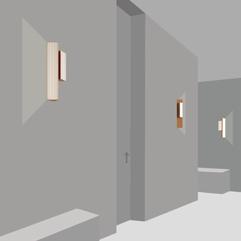
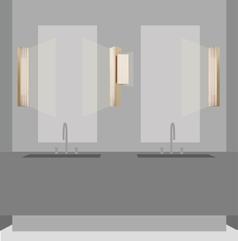
220 - 240V
Ap medium l.60
1 x 27W Custom LED; 2500 Lm 2700 K; CRI >90
Ap double 1 x 13W Custom LED +
1 x 27W Custom LED; 2500 Lm 2700 K; CRI >90
So small l.90
1 x 40W Custom LED; 3750 Lm 2700 K; CRI >90
So large l.150
1 x 65W Custom LED; 6250 Lm 2700 K; CRI >90
Dimmerazione taglio di fase/Triac. Compatibilità con altri sistemi di dimmerazione (DALI e 1-10V) disponibili su richiesta
Phase cut/Triac dimming. Compatibility with other dimming systems (DALI and 1-10V) available on demand
110V
Ap medium l.60
1 x 27W Custom LED; 2500 Lm 2700 K; CRI >90
Ap double 1 x 13W Custom LED + 1 x 27W Custom LED; 2500 Lm 2700 K; CRI >90
So small l.90
1 x 40W Custom LED; 3750 Lm 2700 K; CRI >90
So large l.150
1 x 65W Custom LED; 6250 Lm 2700 K; CRI >90
Dimmerazione taglio di fase/Triac. Compatibilità con sistema di dimmerazione 1-10V disponibile su richiesta
Phase cut/Triac dimming. Compatibility with 1-10V dimming system available on demand
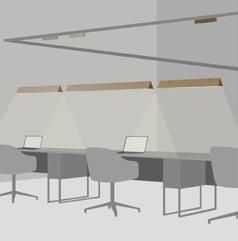
FLY
Massimiliano Raggi
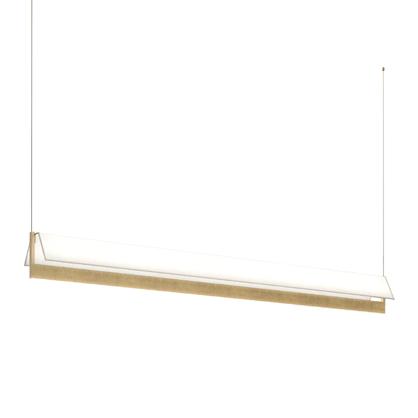
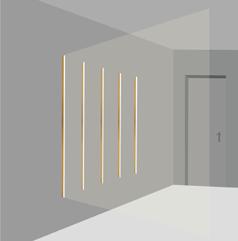
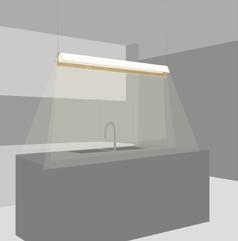
220 - 240V
Ap
DOPPIA EMISSIONE
Fronte: 1 x 20W Strip LED; 2600 Lm
Retro: 1 x 30W Strip LED; 2600 Lm 2700 K; CRI >90
So l.170
DOPPIA EMISSIONE
Superiore: 1 x 24W Strip LED; 3000 Lm
Inferiore: 1 x 30W Strip LED; 4000 Lm 2700 K; CRI >90
Dimmerazione taglio di fase/Triac. Compatibilità con altri sistemi di dimmerazione (DALI e 1-10V) disponibili su richiesta
Phase cut/Triac dimming. Compatibility with other dimming systems (DALI and 1-10V) available on demand
110V
Ap
DOUBLE EMISSION
Front: 1 x 20W Strip LED; 2600 Lm
Back: 1 x 30W Strip LED; 2600 Lm 2700 K; CRI >90
So l.170
DOUBLE EMISSION
Upper: 1 x 24W Strip LED; 3000 Lm
Lower: 1 x 30W Strip LED; 4000 Lm 2700 K; CRI >90
Dimmerazione taglio di fase/Triac. Compatibilità con sistema di dimmerazione 1-10V disponibile su richiesta
Phase cut/Triac dimming. Compatibility with 1-10V dimming system available on demand
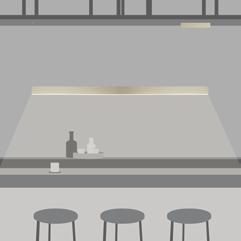
ASIA
Federico Peri
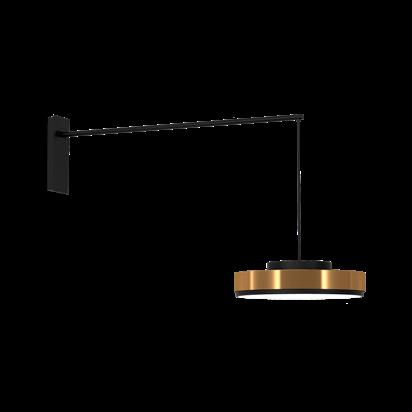
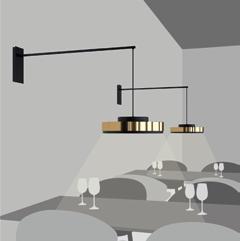
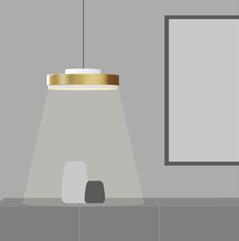
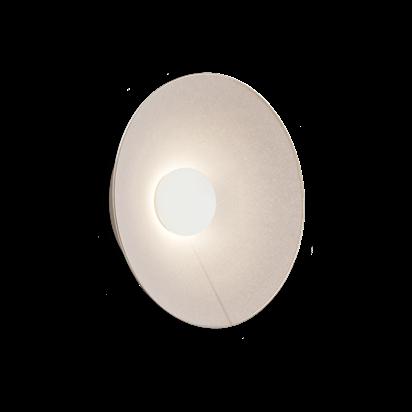
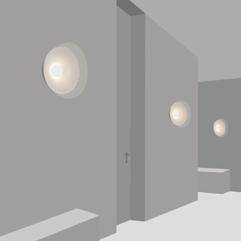
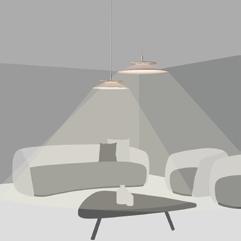
220 - 240V
Ap large
1 x 36W COB LED; 6300 Lm 2700 K; CRI >90
So large
1 x 36W COB LED; 6300 Lm 2700 K; CRI >90
Pl large
1 x 36W COB LED; 6300 Lm 2700 K; CRI >90
Dimmerazione taglio di fase/Triac. Compatibilità con altri sistemi di dimmerazione (DALI e 1-10V) disponibili su richiesta
Phase cut/Triac dimming. Compatibility with other dimming systems (DALI and 1-10V) available on demand
110V
Ap large
1 x 36W COB LED; 6300 Lm 2700 K; CRI >90
So large
1 x 36W COB LED; 6300 Lm 2700 K; CRI >90
Pl large
1 x 36W COB LED; 6300 Lm 2700 K; CRI >90
Dimmerazione taglio di fase/Triac. Compatibilità con sistema di dimmerazione 1-10V disponibile su richiesta
Phase cut/Triac dimming. Compatibility with 1-10V dimming system available on demand
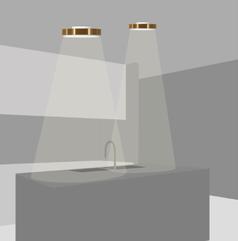
220 - 240V
Ap medium
1 x 37W COB LED; 2800 Lm 2700 K; CRI >90
So large
1 x 40W COB LED; 4500 Lm 2700 K; CRI >90
Dimmerazione taglio di fase/Triac. Compatibilità con altri sistemi di dimmerazione (DALI e 1-10V) disponibili su richiesta
Phase cut/Triac dimming. Compatibility with other dimming systems (DALI and 1-10V) available on demand
Ta medium
1 x 20W Strip LED; 2300 Lm 2700 K; CRI >90
Dimmerabile, comando sulla base
Dimmable, push switch on the base
110V
Ap medium
1 x 37W COB LED; 2800 Lm 2700 K; CRI >90
So large
1 x 40W COB LED; 4500 Lm 2700 K; CRI >90
Dimmerazione taglio di fase/Triac. Compatibilità con sistema di dimmerazione 1-10V disponibile su richiesta
Phase cut/Triac dimming. Compatibility with 1-10V dimming system available on demand
Ta medium
1 x 20W Strip LED; 2300 Lm 2700 K; CRI >90
Dimmerabile, comando sulla base
Dimmable, push switch on the base
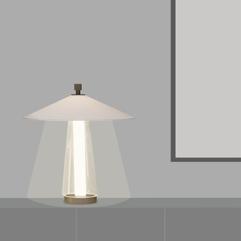
BOGOTÀ
Massimiliano Raggi
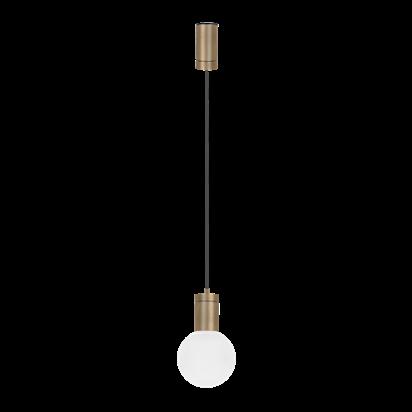
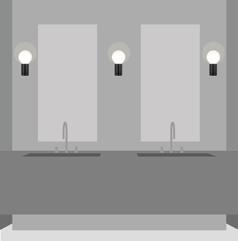
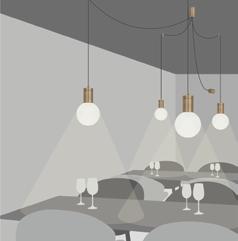
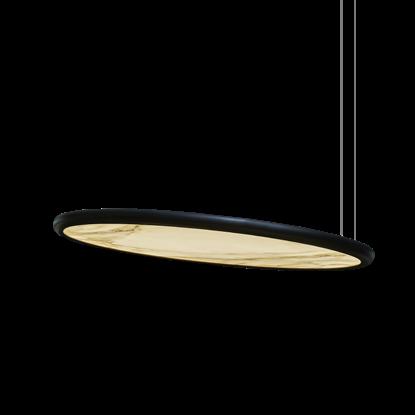
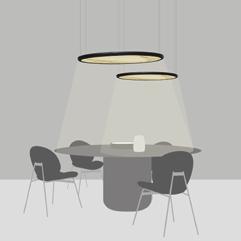
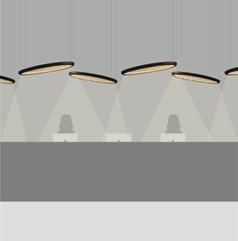
220 - 240V
Ap mini IP44
1 x 5W G9
Lampadina LED
LED light bulb
So 1 x 7.5W GU10
lampadina LED dimmerabile
dimmable LED light bulb; 650 Lm 3000 K; CRI >90
Dimmerazione taglio di fase/Triac. Compatibilità con altri sistemi di dimmerazione (DALI e 1-10V) disponibili su richiesta
Phase cut/Triac dimming. Compatibility with other dimming systems (DALI and 1-10V) available on demand
110V
Ap mini IP44
1 x 5W G9
Lampadina LED
LED light bulb
So 1 x 7.5W GU10
lampadina LED dimmerabile
dimmable LED light bulb; 650 Lm 3000 K; CRI >90
Dimmerazione taglio di fase/Triac. Compatibilità con sistema di dimmerazione 1-10V disponibile su richiesta
Phase cut/Triac dimming. Compatibility with 1-10V dimming system available on demand
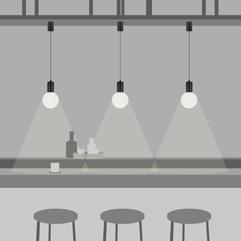
220 - 240V
So small
1 x 39W Panel LED; 3100 Lm 3000 K; CRI >90
So large
1 x 48W Panel LED; 4100 Lm 3000 K; CRI >90
Dimmerazione taglio di fase/Triac. Compatibilità con altri sistemi di dimmerazione (DALI e 1-10V) disponibili su richiesta
Phase cut/Triac dimming. Compatibility with other dimming systems (DALI and 1-10V) available on demand
110V
So small
1 x 39W Panel LED; 3100 Lm 3000 K; CRI >90
So large
1 x 48W Panel LED; 4100 Lm 3000 K; CRI >90
Dimmerazione taglio di fase/Triac. Compatibilità con sistema di dimmerazione 1-10V disponibile su richiesta
Phase cut/Triac dimming. Compatibility with 1-10V dimming system available on demand
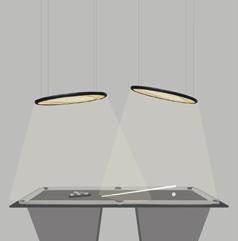
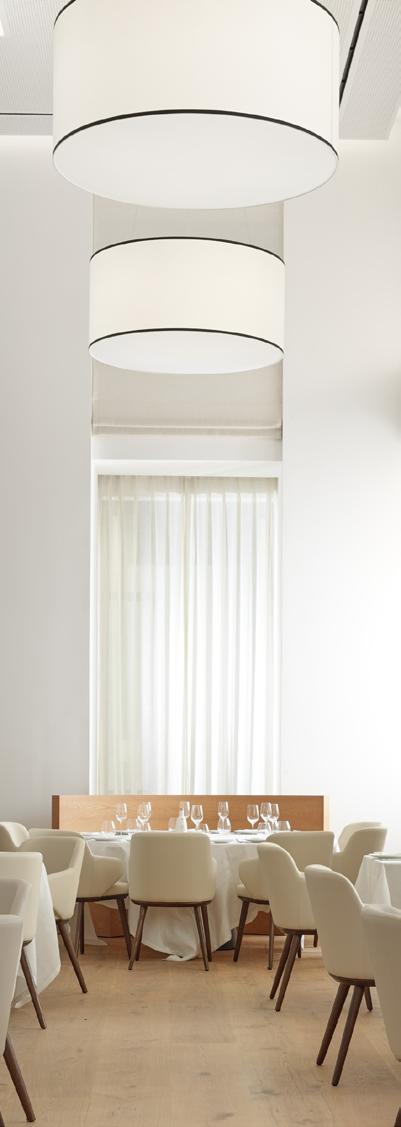
FLUSSO LUMINOSO
Il flusso luminoso esprime la quantità di energia luminosa emessa da una sorgente nell’unità di tempo, può essere reale o nominale. Quello reale è la quantità di luce emessa, mentre quello nominale è ottenuto in laboratiorio, non considerando la dispersioni nell’ottica, schermi e nell’area del fascio luminoso. Conoscere il flusso di una sorgente luminosa è fondamentale per descrivere e confrontare le lampade.
Per comprendere quanto illumina un prodotto è necessario utilizzare: LUMEN.
I LUMEN sono l’unità di misura del flusso luminoso emesso da un corpo illuminante. Vengono distinti in:
LUMEN NOMINALI
Lumen dichiarati dal produttore della sorgente luminosa senza schermi che ne alterino il flusso.
LUMEN REALI
Lumen nominali filtrati dall’eventuale diffusore posto davanti alla sorgente luminosa.
LUMINOUS FLUX
Luminous flux expresses the quantity of luminous energy emitted by a source in a unit of time; it can be real or nominal. The real version is the quantity of light emitted, while the nominal one is obtained in the laboratory, without considering the dispersions in the optics, screens, and around the light beam. Knowing the flux of a light source is essential for describing and comparing lamps.
To understand how much a product lights up, we must use: LUMEN.
Lumens are the unit for measuring the luminous flux emitted by a lighting fixture. They are divided into:
RAW LUMENS
Lumens declared by the light source manufacturer, without the presence of screens that alter the flux.
EFFECTIVE LUMENS
Raw lumens filtered by any diffuser placed in front of the light source.
Diffusore in cotone Cotton diffuser
LUMEN NOMINALI NOMINAL LUMEN
10000 Lm
LUMEN REALI
REAL LUMEN
5000 Lm
RENDIMENTO OTTICO
Il rapporto tra lumen nominali e quelli reali è chiamato rendimento ottico. Il rendimento, che viene espresso normalmente in percentuale, ha valori, che possono oscillare tra il 50% e l’85% (riduzione del 15% - 50% rispetto al valore dei lumen nominali).
Il flusso luminoso emesso da una sorgente luminosa è maggiore di quello che emette la lampada in cui la sorgente è contenuta. Ciò è dovuto all’assorbimento di energia da parte del diffusore o da altri componenti con cui è costruita la lampada.
OPTICAL PERFORMANCE
The ratio of nominal to actual lumens is called optical efficiency. This is normally expressed as a percentage, with values which can fluctuate between 50% and 85% (a reduction of 15% – 50%, compared to the nominal lumen value).
The luminous flux emitted by a light source is greater than that emitted by the lamp that contains the source. This is due to the absorption of energy by the diffuser or by other components of the lamp.
POTENZA (WATT) POWER (WATT)
CHE COSA SONO I WATT?
Il Watt è l’unità di misura della potenza. Questo valore ci fornisce informazioni sulla quantità di energia che una fonte luminosa utilizza; non ci indica quanta luce fa, benchè esistano relazioni matematiche tra Lumen e Watt. Con l’introduzione delle lampadine a LED a basso consumo, otteniamo più luce con un maggiore risparmio energetico, ecco perchè i watt non sono più una misura affidabile.
EFFICIENZA LUMINOSA
Una lampada converte potenza elettrica in radiazione visible (luce) e calore. L’efficienza luminosa di una sorgente di luce è il rapporto tra il flusso luminoso e la potenza elettrica assorbita, dimensionalmente espressa in Lumen/Watt.
WHAT IS A WATT?
The watt is the unit of measurement for power. This value provides information only on the amount of energy that a light source uses, but it does not tell us how much light it makes – although there are mathematical relationships between lumens and watts. With the introduction of low-energy LED bulbs, we get more light with greater energy savings; this is why watts are no longer a reliable measure.
LIGHTING EFFICIENCY
A lamp converts electrical power into visible radiation (light) and heat. The luminous efficiency of a light source is the ratio between the luminous flux and the electrical power absorbed, dimensionally expressed in Lumens / Watts.
ILLUMINAMENTO ILLUMINANCE
COSA SONO I LUX
Il LUX è l’unità di misura dell’illuminamento del Sistema Internazionale ed è riferito all’oggetto illuminato e non alla sorgente.
Corrisponde al rapporto tra il flusso luminoso (lumen) e la superficie illuminata (m²).
In teoria: Un flusso di 1000 lumen concentrato su una superficie di 1 m² illuminerà quel metro quadro di circa 1000 lux*. Diversamente, se 1000 lumen vengono distribuiti su una superficie di 10 m² questi produrranno un’illuminamento di circa 100 lux*.
Sulle schede tecniche dei prodotti è possibile trovare indicato il numero dei lumen sviluppati dai LED utilizzati ed in base alla metratura della stanza da illuminare si può risalire ai lux di illuminamento.
Il dato ottenuto è un dato generico in quanto bisogna tener conto anche di altri fattori che possono influenzare il risultato:
- l’angolo di emissione del raggio luminoso
- il sovrapporsi di ostacoli fisici
- la distanza della sorgente rispetto alla superficie illuminata
- i colori prevalenti nell’ambiente
*Escludendo l’angolo di emssione.
Si evince che l’illuminamento è inversamente proporzionale alla distanza della superficie illuminata dalla fonte luminosa, quindi il suo valore diminuisce all’aumentare della distanza.
Abbreviazione: E v
Unità di misura: Lux (Lx)
Illuminamento: E v (Lx) = flusso luminoso (Lm) superficie (m2)
WHAT IS A LUX?
The lux is the unit of measurement of illuminance in the International System of Units, and refers to the illuminated object and not to the source.
It corresponds to the ratio between the luminous flux (lumen) and the illuminated surface (m²).
In theory:
A flux of 1000 lumens concentrated on a surface of 1 m² will illuminate that square metre by around 1000 lux*. Conversely, if 1000 lumens are distributed over a surface of 10 m², they will produce an illuminance of approximately 100 lux*.
The technical sheets of products will include the number of lumens produced by the LEDs used, and based on the size of the room to be illuminated, it is possible to calculate the lux value.
The data obtained are generic, as it is also necessary to consider other factors that can influence the result:
- the emission angle of the light beam
- the intrusion of physical obstacles
- the distance of the source from the illuminated surface
- the prevailing colours in the environment
*Not considering the beam angle.
Illuminance is inversely proportional to the distance of the illuminated surface from the light source; therefore, its value decreases as the distance increases.
Abbreviation: E v Unit of measurement: Lux (Lx)
Illuminance: E v (Lx) = luminous flux (Lm) / surface (m2)
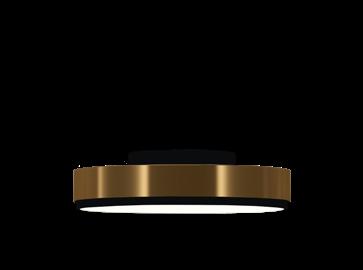
1 metro / meter distanza / distance
2 metri / meters distanza / distance
4 / 5 m2
780 lux
3 metri / meters distanza / distance
12 / 15 m2
300 lux
20 / 25 m2
220 lux
DIAGRAMMA POLARE (cd/klm)
DIAGRAMMA POLARE ( cd/klm) POLAR DIAGRAM (cd/klm)
GRANDEZZE FOTOMETRICHE
Il flusso Luminoso emesso lungo una data direzione per unità di angolo solido è detto intensità luminosa. L’unità di misura è la candela [cd]. 1 cd = 1lm/1sr
Il flusso Luminoso è la quantità di luce emessa da una certa sorgente o apparecchio di illuminazione
L’efficienza luminosa è il rapport tra il flusso Luminoso è la Potenza elettrica assorbita (lm/W): è questa a dare la misura dell’economicità del corpo illuminante.
Abbreviazione: F Phi Unità di misura: lm (LUMEN)
PHOTOMETRIC QUANTITIES
The luminous flux emitted along a given direction per unit of solid angle (sr) is called luminous intensity.
The unit of measurement is the candela (cd).
1 cd = 1 lm / 1 sr
Luminous flux is the amount of light emitted by a certain source or lighting fixture.
Luminous efficiency is the ratio between the luminous flux and the absorbed electrical power (lm/W): this is what gives the measure of the economy of the luminaire.
Abbreviation: F Phi
Unit of measure: lm (LUMEN)
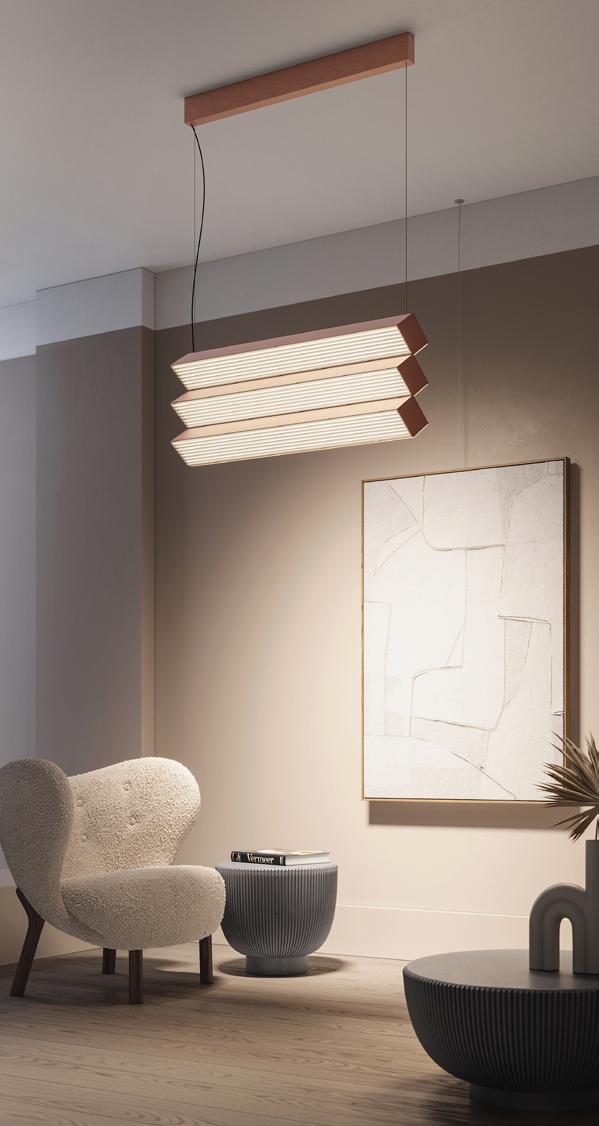
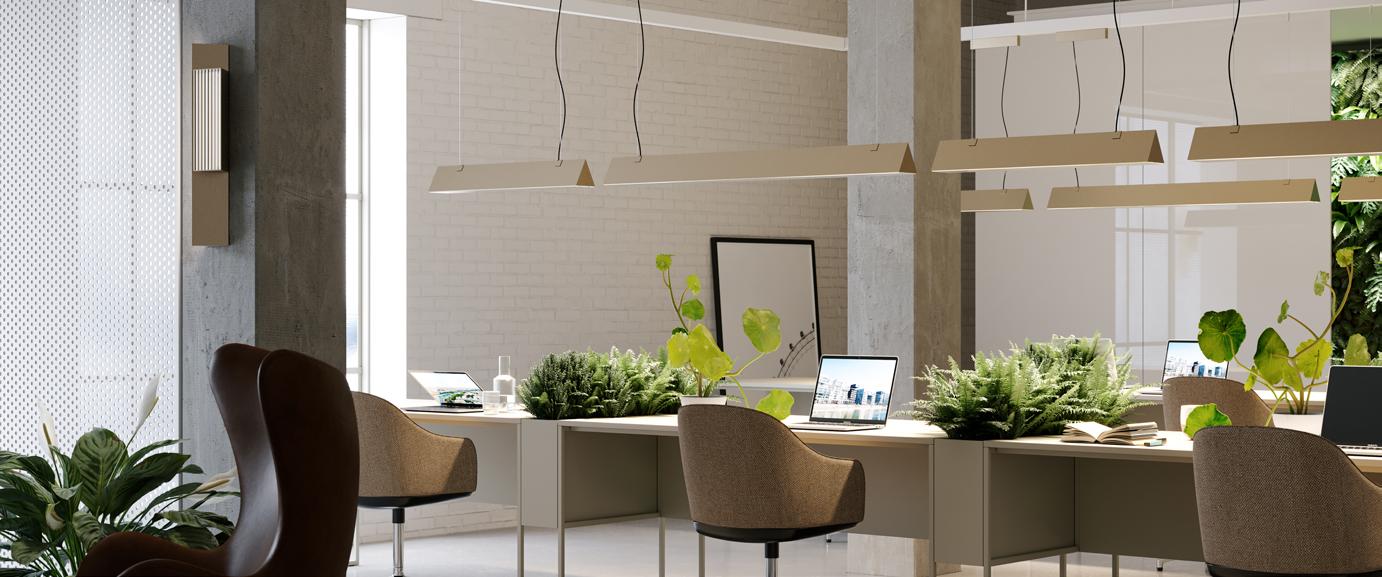
INDICE DI ABBAGLIAMENTO UNIFICATO (UGR)
UNIFIED GLARE INDEX (UGR)
UGR, DI COSA PARLIAMO?
L’UGR è l’Unified Glare Ratio, ed è un valore che misura l’abbagliamento prodotto da un apparecchio all’occhio umano.
Secondo le raccomandazioni della normativa europea EN 12464-1, per gli spazi di ufficio si raccomandano valori UGR ≤19 per assicurare un ambiente visivo confortevole.
WHAT IS UGR?
The UGR is the Unified Glare Ratio, a value that measures the glare produced by a device to the human eye.
According to the recommendations of the European Standard EN 12464-1, for office spaces, UGR ≤19 is recommended to ensure a comfortable viewing environment.
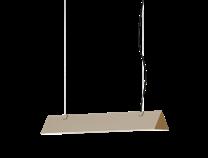
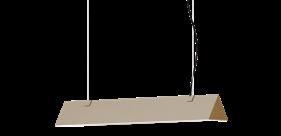
DIMMERAZIONE DIMMING
COS’È UN DIMMER
Il dimmer è un regolatore di luce che grazie ad un circuito elettronico varia la tensione di alimentazione dell’apparecchio adibito all’illuminazione e, di conseguenza, regola la luminosità stessa della lampada.
Quali sono i vantaggi di una lampada a LED dimmerabile?
Comfort (riusciamo a creare l’atmosfera desiderata)
Comfort + funzionalità (riusciamo ad avere la luce necessaria senza sprechi)
Funzionalità + risparmio (non inquiniamo)
Risparmio (sulla bolletta)
I dimmer si integrano alla perfezione con i sistemi di domotica.
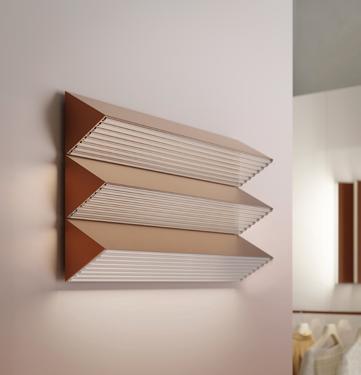
SISTEMI DI DIMMERAZIONE
DIMMING SYSTEMS
TAGLIO DI FASE / TRIAC
Sono contraddistinti dalle lettere RC sono adatti per lampade a LED regolabile Il regolatore con taglio della fase può aiutarci a risparmiare energia. Con un intervallo di regolazione del 100%, è possibile regolare la luce da completamente spenta a completamente accesa.
Tutte le lampadine LED regolabili possono essere regolate in intensità con il sistema di taglio della fase.
PUSH
PHASE CUT / TRIAC
They are marked with the letters RC and are suitable for dimmable LED lamps. Phase cut regulators can help us save energy.
With a dimming range of 100%, we can dim the light from completely on to completely off.
All dimmable LED bulbs can be dimmed with the phase cut system.
WHAT IS A DIMMER?
The dimmer is a light regulator that uses an electronic circuit to vary the power supply voltage of the lighting fixture, and consequently regulates the brightness of the lamp itself.
What are the advantages of a dimmable LED lamp?
Comfort
(It lets us create the desired atmosphere)
Comfort + functionality
(It provides light where necessary, without waste)
Functionality + savings
(It avoids polluting the environment)
Savings
(It saves money on energy bills)
Also, dimmers integrate perfectly with home automation systems.
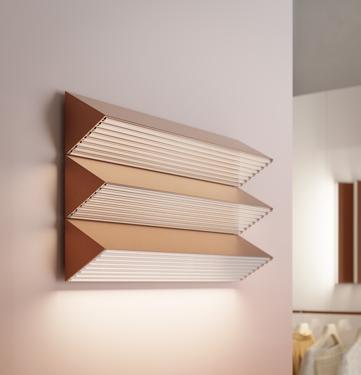
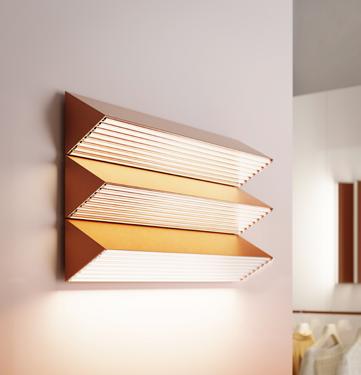
La dimmerazione Push deve essere utilizzata in combinazione con un normale interruttore a pulsante e permette una perfetta dimmerazione 0-100%. La pressione veloce del pulsante permette l’accensione e lo spegnimento. La pressione prolungata permette la regolazione.
DALI
(Digital Addressable Lighting Interface)
è la tecnologia digitale standard per la gestione di apparecchi di illuminazione, basata su un segnale digitale in grado di indirizzare moduli in modo bidirezionale. Dimmer comandato a distanza. Dali è compatibile con tutti i sistemi di la maggioranza dei sistemi di domotica.
0-10V
La regolazione avviene direttamente dal sistema di automazione dell’edificio con uscita 0-10V che va ad interagire sul voltaggio del dimmer.
CASAMBI
Casambi è un sistema professionale avanzato ideato per la gestione dell’illuminazione senza fili: basato su tecnologia Bluetooth a basso consumo energetico, il sistema Casambi può essere gestito direttamente da smartphone o tablet, grazie all’applicazione compatibile con sistemi operativi Android e iOS. Casambi da la possibilità di connettere fra loro le lampade e di creare un sistema demotico senza predisposizione dell’impianto.
PUSH
Push dimming is to be used in conjunction with a normal push-button switch, and provides perfect 0–100% dimming.
Pressing the button quickly turns it on and off, while prolonged pressure allows adjustment.
DALI
Digital Addressable Lighting Interface
is the standard digital technology for managing lighting fixtures, based on a digital signal capable of addressing modules in a bidirectional way. DALI is a remote controlled dimmer, and is compatible with all systems in the majority of home automation systems.
0-10V
The regulation operates directly from the building automation system with a 0–10V output, which interacts with the dimmer voltage.
CASAMBI
Casambi is an advanced professional system designed for wireless lighting management: based on low energy consumption Bluetooth technology, Casambi can be managed directly from a smartphone or tablet, thanks to an application that is compatible with Android and iOS operating systems. Casambi make it possible to connect the lamps together and create a domotic system without preparing the system.
PRIMA CIFRA / FIRST DIGIT
Livello
IP 0X Nessuna protezione / No protection Nessuna protezione / No protection
IP 1x Protetto contro corpi solidi di dimensioni
superiori a 50mm / Protected against solid bodies larger than 50 mm
GRADO IP
COSA SI INTENDE PER GRADO DI PROTEZIONE IP
Cosa significa il valore IP sull’illuminazione?
IP è l’acronimo di “Ingress Protection” o “International Protecting rating”.
Il Grado di Protezione IP dei corpi illuminanti è un indice che esprime la capacità di un apparecchio d’illuminazione di resistere agli agenti atmosferici, in modo da preservare il funzionamento nel tempo.
La prima cifra dopo “IP” indica il grado di protezione contro l’ingresso di corpi estranei solidi (0-6), la seconda cifra contro l’ingresso nocivo di particelle liquide (0-8).
Un Grado di Protezione IP non adeguato all’applicazione specifica può portare all’insorgere di problematiche, anche gravi, di messa in sicurezza dell’impianto di illuminazione.
In generale, gli apparecchi d’illuminazione con applicazione per interni, come salotto e camera da letto, hanno grado di protezione IP20 (mai inferiore), ma in ambienti quali i servizi igienici o le cucine professionali, dove c’è una costante esalazione di vapori, è richiesto un grado di protezione più specifico: l’IP44.
Maggiore è il valore IP, più alta è la protezione della lampada da corpi estranei solidi o liquidi.
Maggiore è la vicinanza a corpi liquidi, più alto sarà il valore IP necessario.
IP CODE
WHAT IS IP DEGREE OF PROTECTION?
What does the IP value on lighting mean?
IP è l’acronimo di “Ingress Protection” o “International Protecting rating”.
The IP Protection Degree of the lighting fixtures is an index that expresses the ability of a luminaire to resist atmospheric agents, in order to preserve functioning over time.
The first digit after “IP” indicates the level of protection against the ingress of solid foreign objects (0-6); the second digit indicates the level of protection against harmful ingress of liquid particles (0-8).
An inadequate IP rate could lead to problems, even serious, with the lighting system security.
As a general rule, lighting fixtures for indoor usage, such as living rooms and bedrooms, have a IP20 rated (never lower), but if used in the bathroom area or in professional kitchens, where there are constant exhalations of steam, a more specific level of protection is required: IP44
The higher the IP value, the more resistant to humidity and water the lamp is. The closer to a water source, the higher the IP value required.
IP 2X
IP 3X
Protetto contro corpi solidi di dimensioni
superiori a 12mm / Protected against solid bodies larger than 12 mm
Protetto contro corpi solidi di dimensioni
superiori a 2,5mm / Protected against solid bodies larger than 2.5 mm
IP 4X Protetto contro corpi solidi di dimensioni
superiori a 1mm / Protected against solid bodies larger than 1 mm
IP 5X Protetto contro la polvere
Protected against dust
IP 6X Totalmente protetto dalla polvere
Totally protected from dust
SECONDA CIFRA / SECOND DIGIT
Livello Level Definizione Definition
IP X0 Nessuna protezione / No protection
Protetto da caduta verticale di gocce d’acqua
IP X1
IP X2
Protected against vertically falling drops of water
Protetto da cadute di gocce d’acqua con inclinazione massima 15˚
Protected against falling drops of water with a maximum inclination of 15˚
IP X3 Protetto dalla pioggia / Protected from the rain
IP X4 Protetto da spruzzi / Splash protected
IP X5 Protetto da getti d’acqua / Protected from water jets
IP X6 Protetto da ondate / Protected from waves
IP X7 Protetto da immersione temporanea
Protected against temporary immersion
IP X8 Protetto da immersione continua
Protected from continuous immersion
Protetto dall’inserimento accidentale di una mano / Protected from accidental insertion of a hand
Protetto contro l’accesso con un dito Protected against access with a finger
Protetto contro l’accesso con un attrezzo Protected against access with a tool
Protetto contro l’accesso con un filo
Protected against access with a wire
Protetto contro l’accesso di polvere o di un filo sottile / Protected against the access of dust or a thin wire
Totalmente protetto dalla polvere
Totally protected from dust
Effetto Effect
Da utilizzare in ambienti lontani dal contatto con l’acqua / To be used in environments away from contact with water
Per luoghi con rari schizzi d’acqua
For places with rare splashes of water
Per luoghi con rari schizzi d’acqua
For places with rare splashes of water
Per uso interno ed esterno al coperto (illuminazione sotto una tettoia)
For indoor and outdoor use under cover (lighting under a canopy)
Per uso interno (es. in cucina) ed esterno
For internal (e.g., in the kitchen) and external use
Per uso interno (es. in cucina) ed esterno
For internal (e.g., in the kitchen) and external use
Per uso interno ed esterno / For internal and external use
Per ogni utilizzo / For every use
Per ogni utilizzo, anche immersione
For every use, even diving
BAGNO: GRADO IP CONSIGLIATO
ZONA 1 - IP65 (o IPX5)
Le installazioni per l’illuminazione in questo tipo di ambiente devono essere anti-nebulaizone. Richiesto IP65 o superiore.
ZONA 2 - IP44 (o IPX4)
Le installazioni per l’illuminazione nelle zone 2 devono essere anti-spruzzo.
ZONA 3 - IP20
Non sono previsti particolari requisiti IP.
BATHROOM: IP RATING RECOMMENDED
ZONE 1 - IP65 (o IPX5)
Lighting installations in this type of environment must be anti-mist. IP65 or higher required.
ZONE 2 - IP44 (o IPX4)
Installations for lighting in zones 2 must be anti-splash.
ZONE 3 - IP20
There are no particular IP requirements.
ESTERNO: GRADO IP CONSIGLIATO
ZONA 1 - IP66 (o IPX6)
Le installazioni per l’illuminazione in spazi come giardino, passaggi esterni, devono essere IP66.
ZONA 2 - IP55 (o IPX5)
Le installazioni per l’illuminazione nelle zone 2 devono essere protette da getti d’acqua diretti, come terrazze e ingressi coperti da tettoia.
ZONA 3 - IP44 (O IPX4)
Le installazioni per l’illuminazione nelle zone 3 devono essere anti-spruzzo, posizionate sotto un portico o a parete sotto una pensilina.
OUTDOOR: IP RATING RECOMMENDED
ZONE 1 - IP66 (O IPX6)
Lighting installations in spaces such as gardens and outdoor passages must be IP66.
ZONE 2 - IP55 (O IPX5)
Lighting installations in zones 2 must be protected by direct water jets, such as terraces and roofed entrances.
ZONE 3 - IP44 (O IPX4)
Lighting installations in zones 3 shall be anti-splash, placed under a portico or on the wall under a shelter.
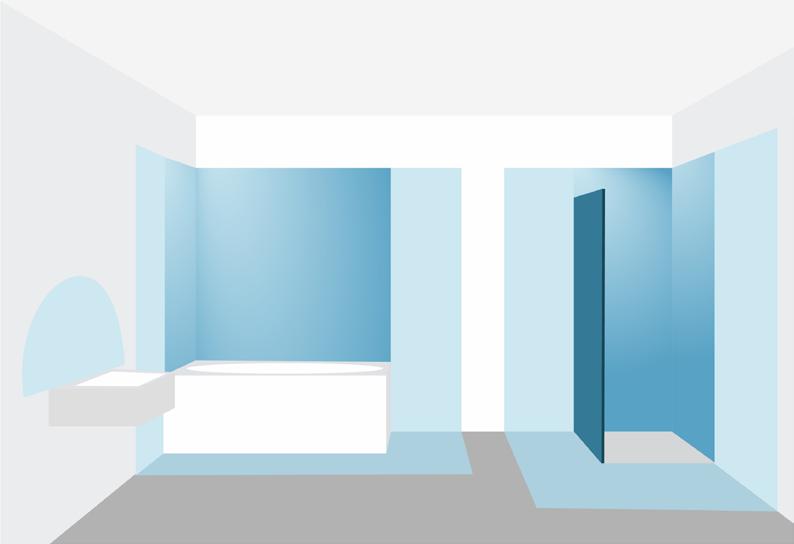
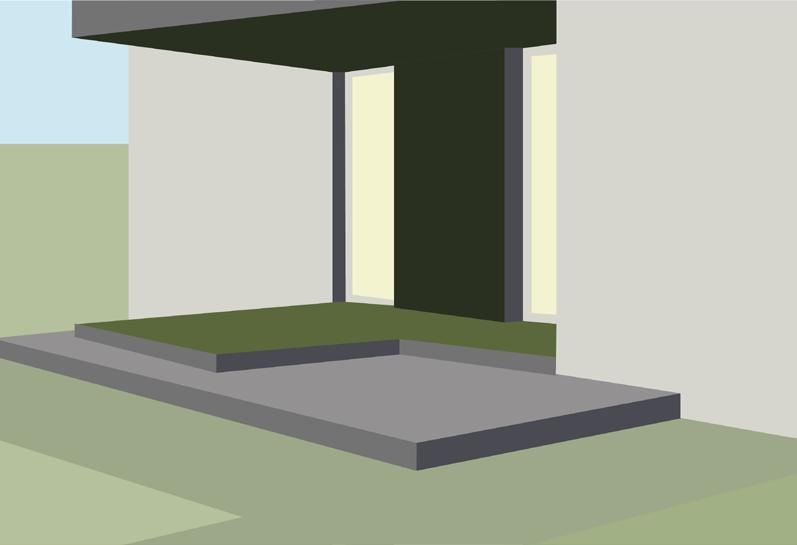
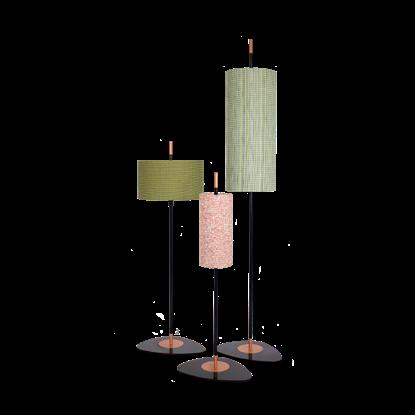
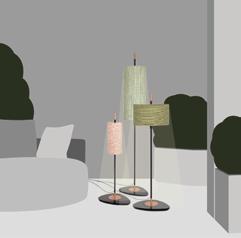
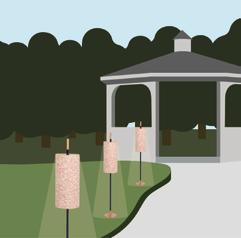
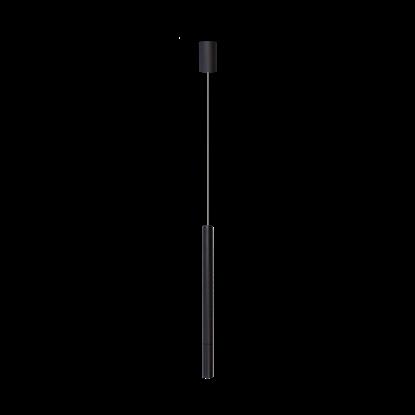
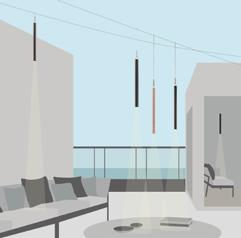
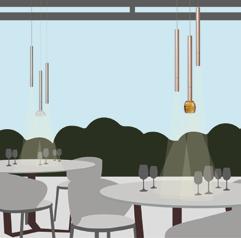
220 - 240V
1 x 9W E27 T8
Lampadina Tubular LED LED light bulb
Compatibile con sistemi di controllo remoto in caso di utilizzo di lampadine LED dimmerabili
Compatible with remote control systems whien dimmable LED bulbs are used
110V
1 x 9W E26 T8
Lampadina Tubular LED LED light bulb
Compatibile con sistemi di controllo remoto in caso di utilizzo di lampadine LED dimmerabili
Compatible with remote control systems whien dimmable LED bulbs are used
220 - 240V
So - Battery
1 x 3W LED module; 500 Lm 2700 K; CRI: >90 Battery Dimmerabile - dimmable
110V
So - Battery
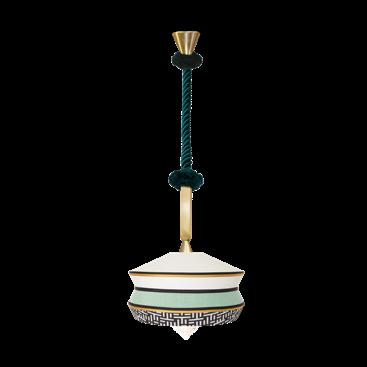
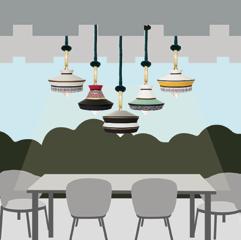
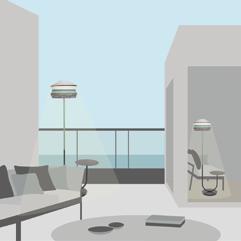
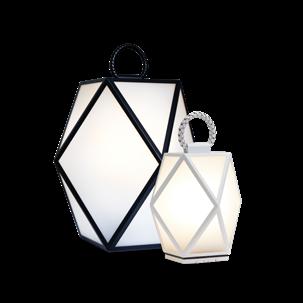
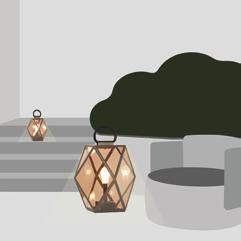
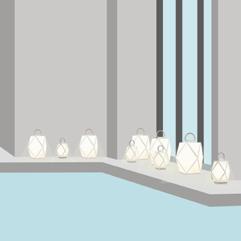
220 - 240V
1 x 9W E27 T8
Lampadina Tubular LED LED light bulb
IP65
Compatibile con sistemi di controllo remoto in caso di utilizzo di lampadine LED dimmerabili
Compatible with remote control systems whien dimmable LED bulbs are used
110V
1 x 9W E26 T8
Lampadina Tubular LED
LED light bulb
IP65
Compatibile con sistemi di controllo remoto in caso di utilizzo di lampadine LED dimmerabili
Compatible with remote control systems whien dimmable LED bulbs are used
220 - 240V
1 x 3W LED module; 430 Lm 3000 K; CRI: >90 IP65
110V
1 x 3W LED module; 430 Lm 3000 K; CRI: >90 IP65
“Con il supporto del team Contardi, abbiamo voluto realizzare questo report con l’intenzione di aiutare architetti, interior designer e collaboratori a conoscere meglio la luce e a scoprire la collezione Contardi.”
“With the support of the Contardi team, we aimed to produce this report with the intention of supporting architects, interior designers and collaborators to learn more about light and discover the Contardi collection.”
Marcello Colli, Lightign Designer
Marcello Colli
Lighting designer
Un ringraziamento speciale a: A special thanks to:

Marcello Colli si diploma in design e comunicazione all’UDP di Reggio Emilia e in seguito lavora come freelance nel settore del design e nel settore Moda. Dal 2005 lavora nel mercato italiano per alcune aziende straniere di design e della luce.
Dal 2009 Marcello Colli collabora con lo studio Maurizio Di Mauro Architetto. Lo studio, ha collaborato e collabora direttamente con aziende italiane del settore arredamento ed illuminazione, sia come direzione artistica, che come disegno industriale.
Nel 2013 iniziano i rapporti con Contardi, disegnando prodotti di illuminazione e sistemi, e come poi consulente di prodotto e di progetto.
Marcello Colli lavora come designer di interni e light designer, sviluppando soprattutto progetti di illuminazione, disegno industriale di prodotti e di lampade, lavorando anche come consulente strategico nel mondo della luce e in diversi settori del design, dall’arredo alla ceramica.
Marcello Colli graduated in design and communication at the UDP of Reggio Emilia and later worked as a freelance in the design and fashion sector. In 2005 he started collaborations for the Italian market with some foreign design and lighting companies.
In 2009 Marcello Colli began collaborating with Maurizio Di Mauro Architetto. The studio has collaborated and collaborates directly with Italian companies in the furniture and lighting sector, both as artistic direction and as industrial design.
Since 2013 he has been collaborating with Contardi, designing lighting products and systems, and as a product and project consultant.
Marcello Colli works as interior designer and light designer, mainly developing lighting projects up to the industrial design of lamps and as a strategic consultant on the themes of light in various design sectors from furniture to ceramics.


